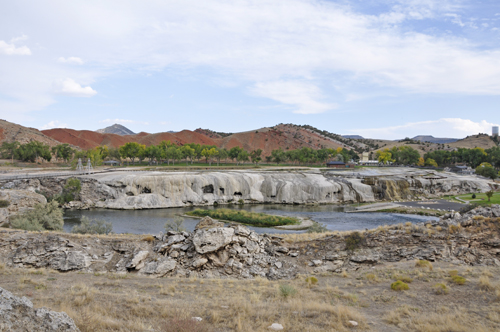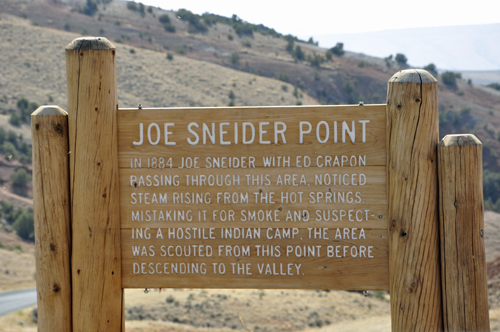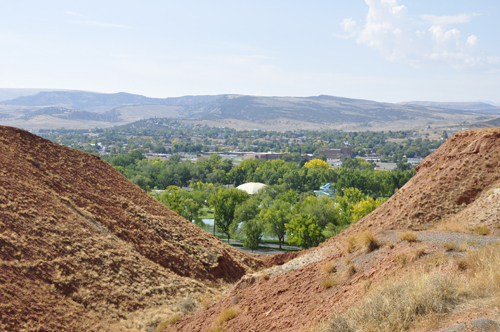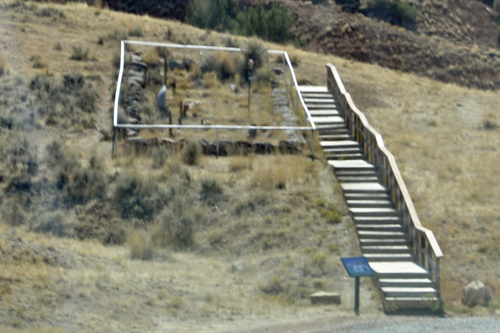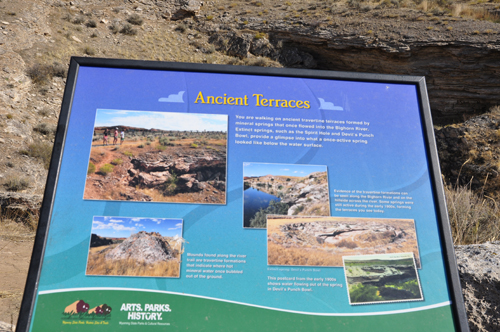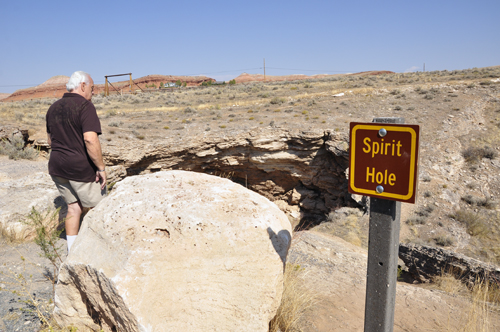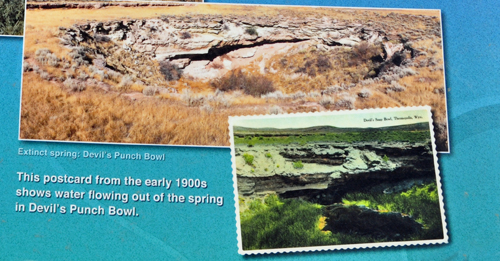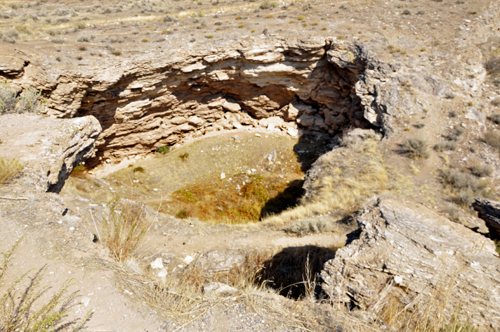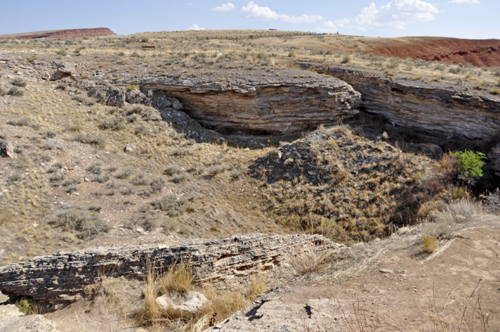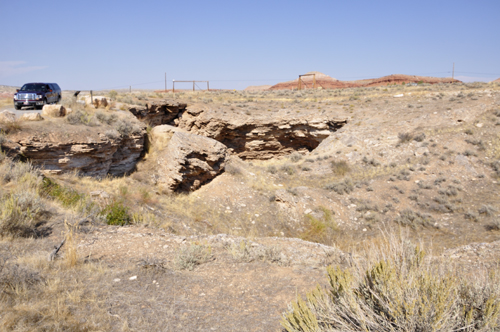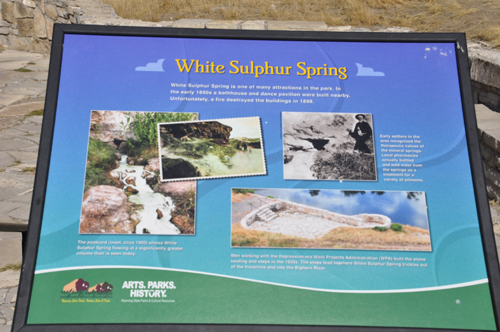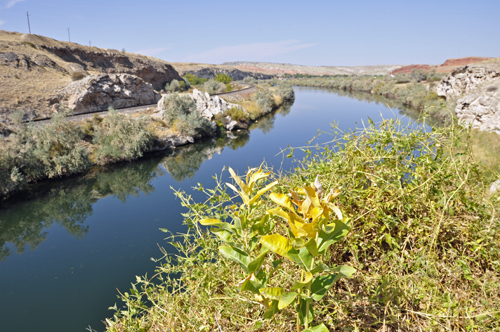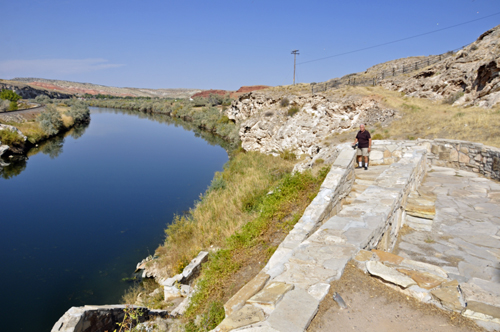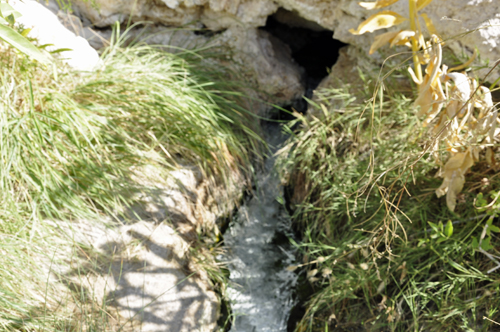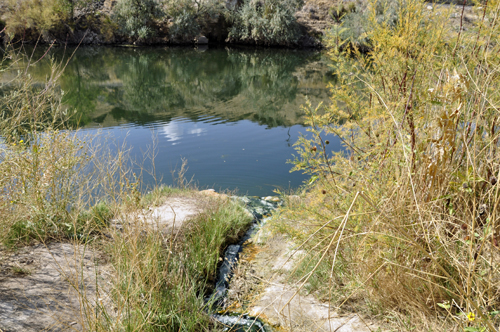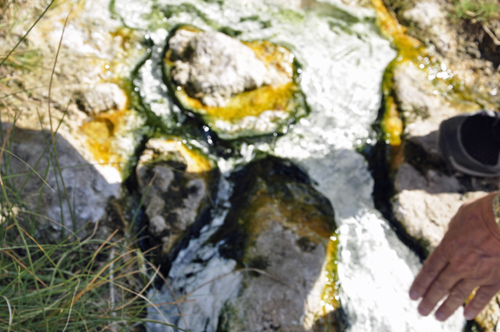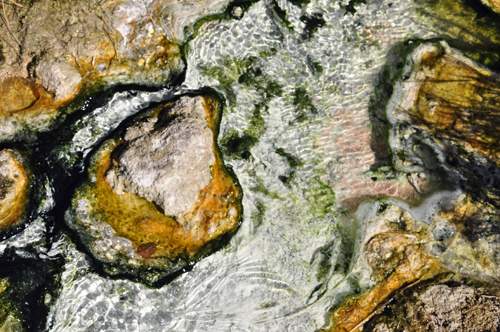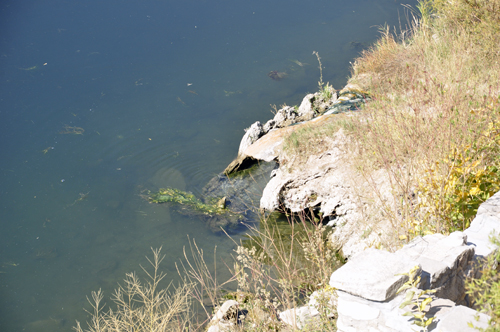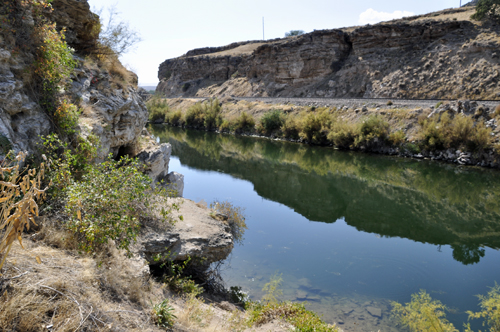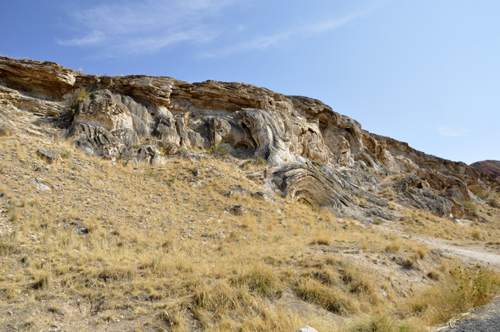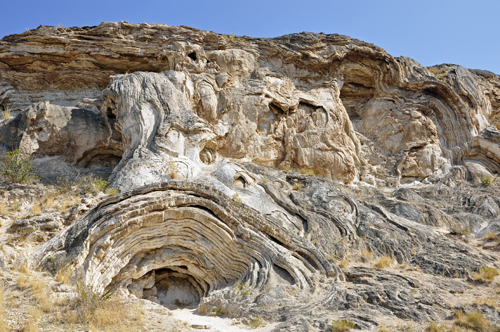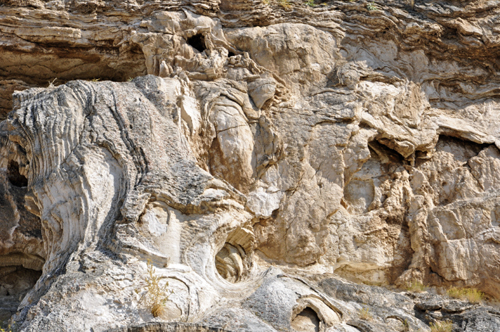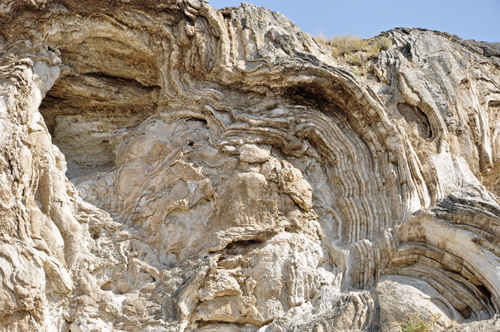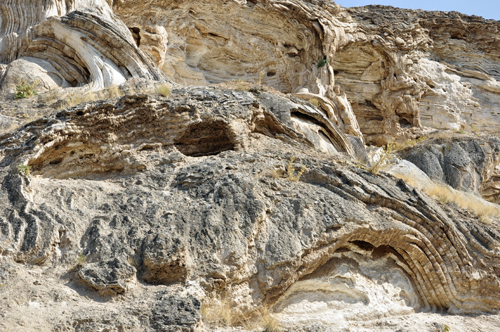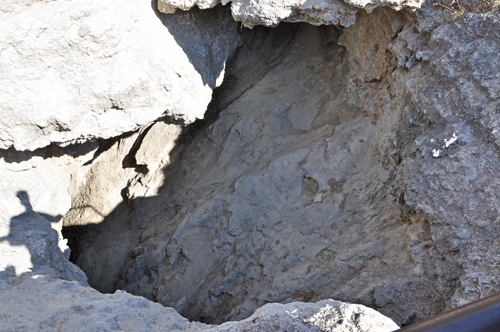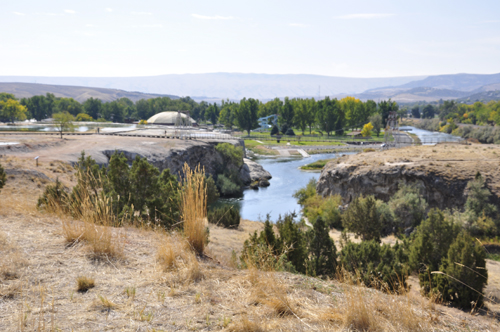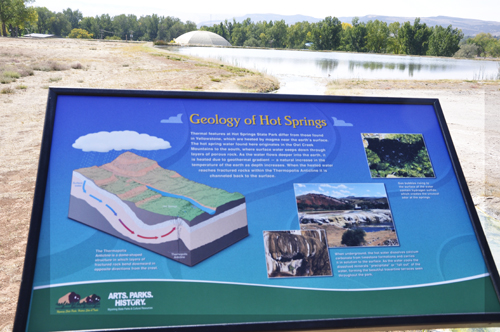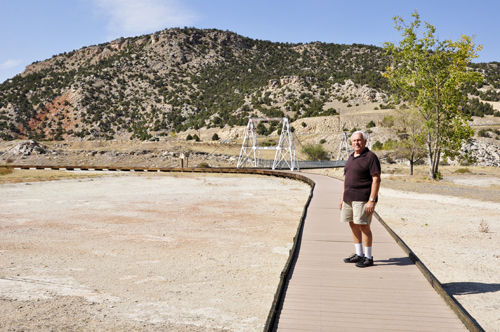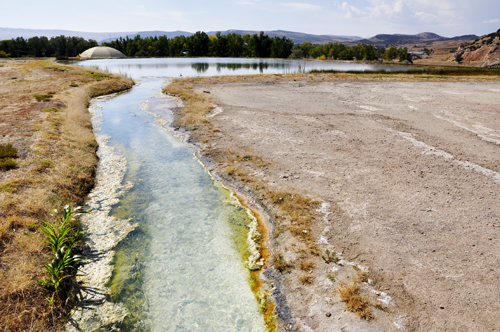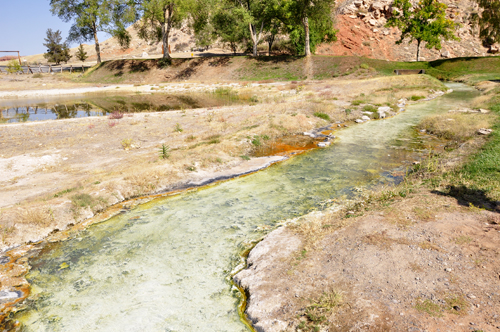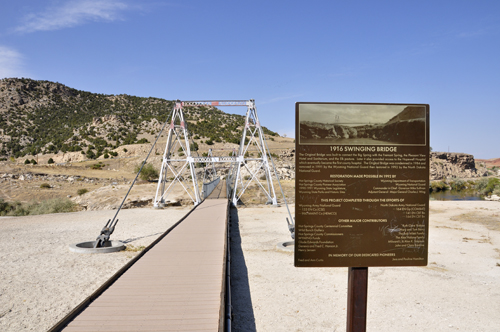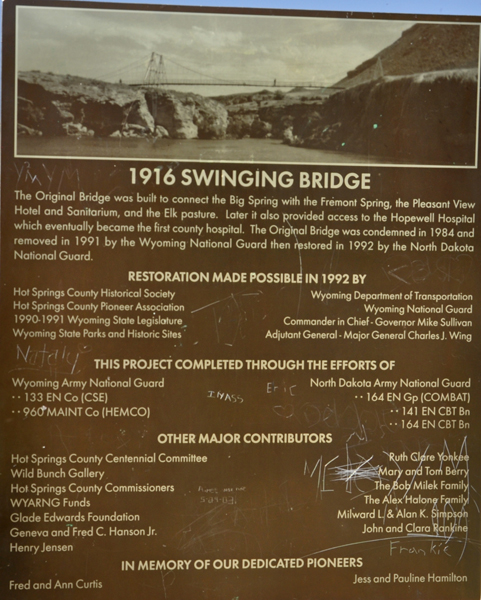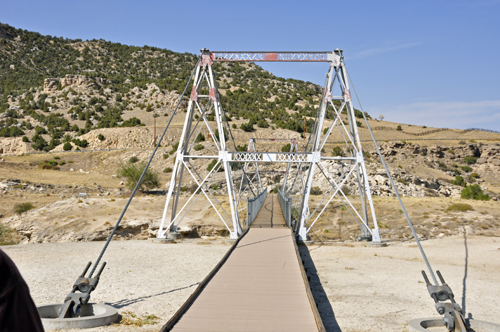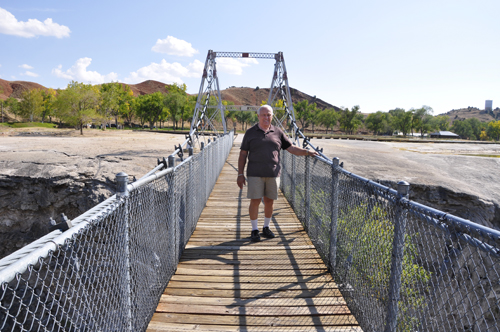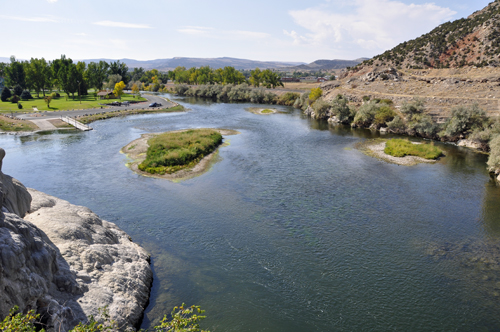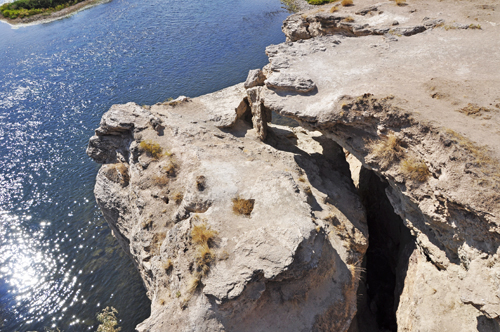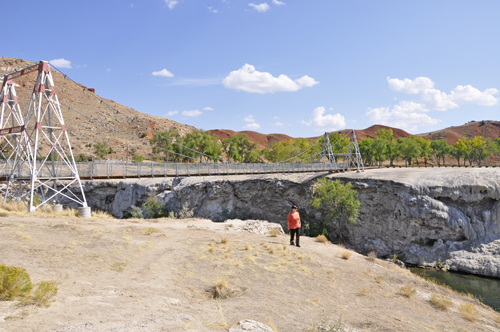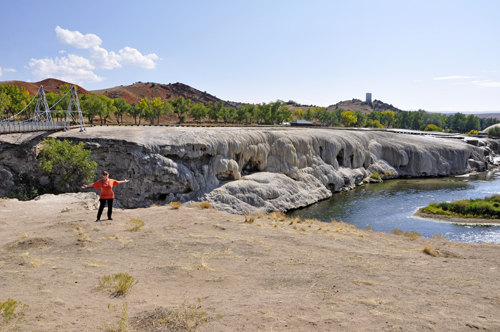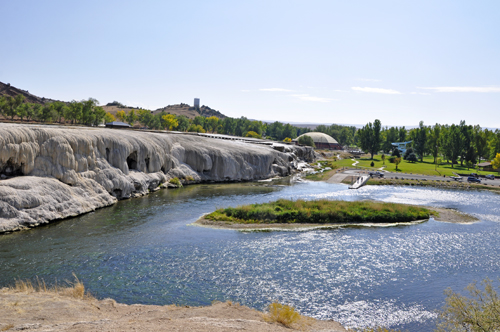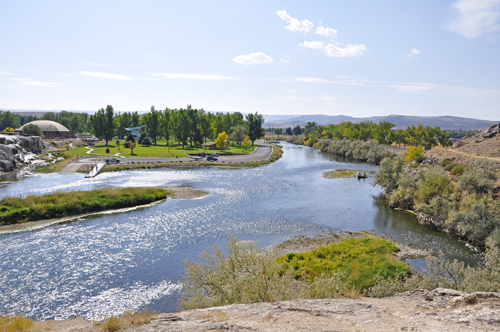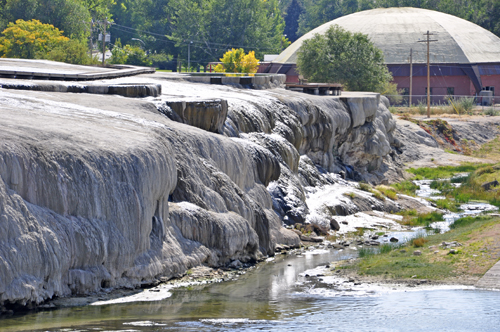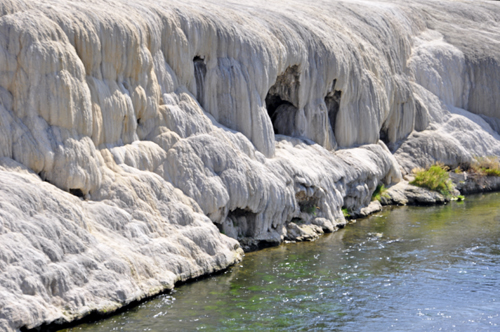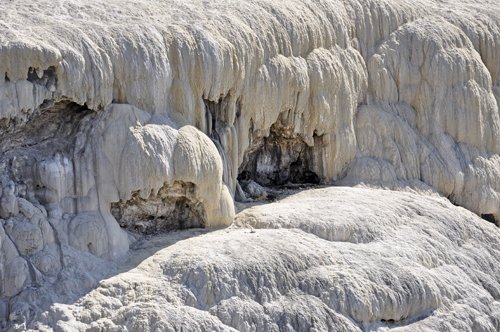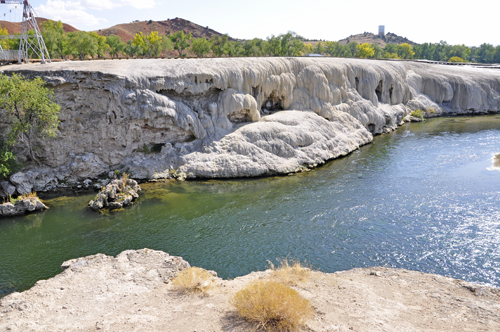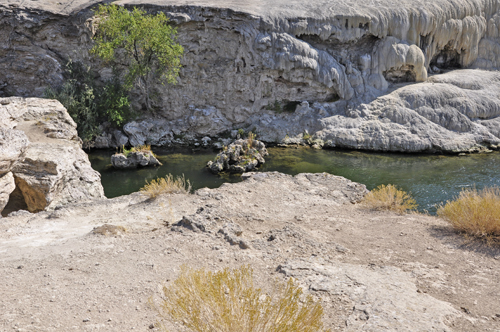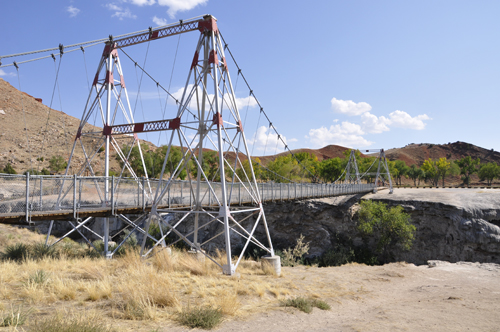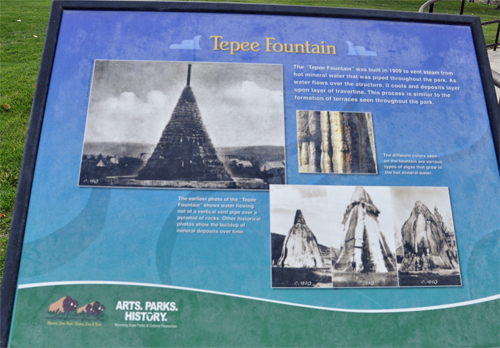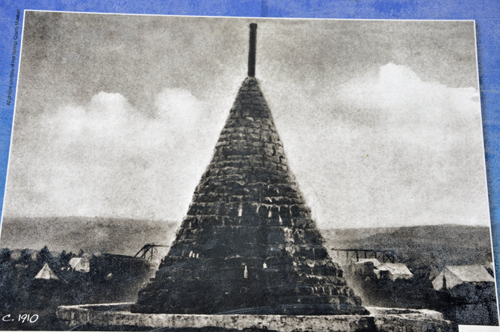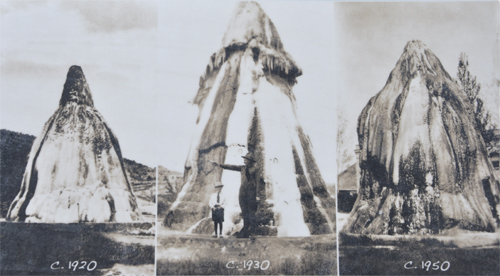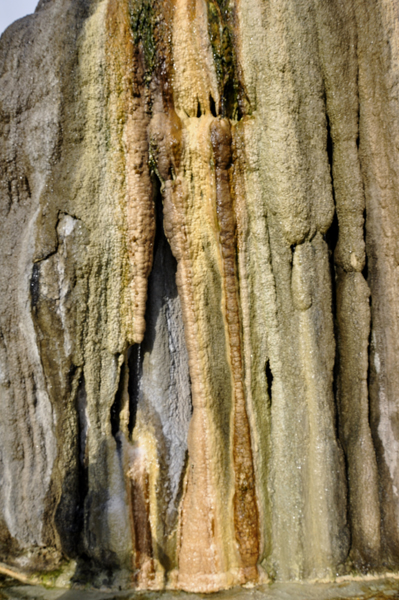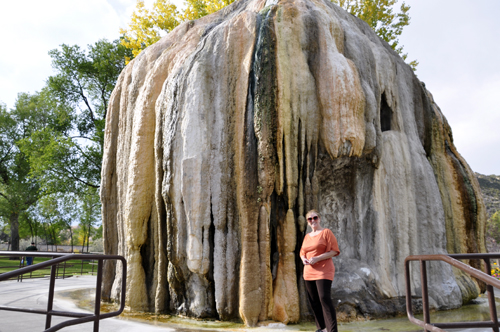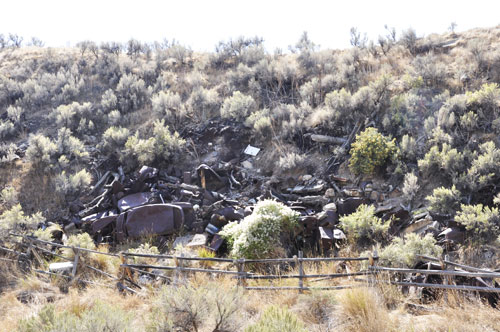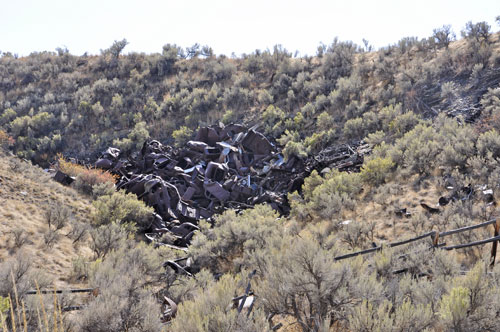 HOT
SPRINGS STATE PARK: The terraces were known and used for years by Indians,
who believed that the waters were beneficial to health and that they
could have a warrior invincible in battle. Chief Washakie of the Shoshone
tribe, who built a personal bath house there, and Chief Sharp Nose of
the Arapaho tribe sold the hot springs to the United States in 1896
with the provision that a portion should be forever reserved for the
use and benefit of the public. Today nothing is left of Washakie's bath
house, although a small marker may be found at the site. At Thermopolis
each year in early August, the presentation of the springs to the white
man is re-enacted in the "Gift of the Waters Pageant." HOT
SPRINGS STATE PARK: The terraces were known and used for years by Indians,
who believed that the waters were beneficial to health and that they
could have a warrior invincible in battle. Chief Washakie of the Shoshone
tribe, who built a personal bath house there, and Chief Sharp Nose of
the Arapaho tribe sold the hot springs to the United States in 1896
with the provision that a portion should be forever reserved for the
use and benefit of the public. Today nothing is left of Washakie's bath
house, although a small marker may be found at the site. At Thermopolis
each year in early August, the presentation of the springs to the white
man is re-enacted in the "Gift of the Waters Pageant."
When the United States released a one-square mile tract of land to
the state in 1897 to establish Big Horn Hot Springs State Reserve, the
Reserve became the first of Wyoming state parks. Big Horn Hot Springs
still flows over the Rainbow Terraces, but significant additions have
been made to the park, including the Wyoming Pioneer Home and the Gottsche
Rehabilitation Center where the infirm-both young and old-have the advantage
of healing waters. The Plaza Hotel-constructed in 1914, and the Holiday
Inn-built more recently, accommodate park visitors, and each establishment
owns its own hot mineral water swimming pools that are also open to
the public. A winding, concrete walkway atop the terraces of sulphur
pools provided a view of algae and mineral formations on the bluffs
overlooking the Big Horn River. |
|
|
Hot Springs State Park
is a small preserve, occupying just one square mile, and besides the
springs, it contains a section of grassy hills above the river, home
to a herd of around 25 bison which may be viewed close up via a short
scenic drive (none of which were anywhere in sight while the two RV
Gypsies were here).
Despite these varied natural attractions, however, the whole park
is urbanized and developed; all water from the springs is channeled
and regulated, some directed to two bathing pools which provide the
main attraction for most visitors, and are part of a varied assortment
of buildings that also includes a wellness institution (Gottsche
Rehabilitation Center), an assisted living house (Wyoming
Pioneer Home), a cafe and two hotels. But the park is
a pleasant location, free to enter, and the combination of the river,
the terrace and the rolling reddish hills is quite photogenic. |
The two RV Gypsies were not
sure what the staircase shown below is all about. They did not bother
to walk up the stairs to find out.
|
Below: Spirit Hole: The sign said:
"You are walking on ancient travertine terraces formed by mineral
springs that once flowed into the Bighorn River." Extinct
springs, such as the Spirit Hole and Devil's Punch Bowl, provide a glimpse
into what a once-active spring looked like below the water surface. |
|
|
Below: DEVIL'S PUNCH BOWL;
The picture below of a postcard from the early 1900s shows water flowing
out of the spring in Devil's Punch Bowl. Plus here are 3 photos of Devil's
Punch Bowl as seen today |
|
|
|
|
Below: White Sulphur Spring |
|
Below: View of the Big Horn River as seen
from the parking lot at White Sulphur Spring at Hot Springs State Park. |
|
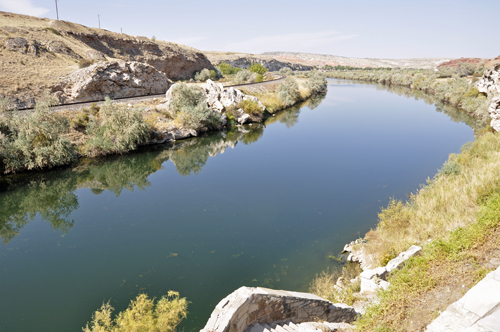 |
Below: Men working with the Depression
Era Work Projects Administration built the stone landing and steps
in the 1830s. the steps led to where White Sulphur Spring trickles out
of the travertine and into the Big Horn River. |
|
Below: Here, White Sulphur Spring trickled
out of the travertine and into the Big Horn River. |
|
|
Below: The beauty of the white sulphur
water as it flowed out of the travertine and into the Big Horn River
- and Lee Duquette very bravely, but slowly, felt the water to
see how hot it was. "Too hot" yelled Lee. DUH! |
|
|
Below: Another view of the water flowing
into the river. |
|
|
Below: The two RV Gypsies climbed back
up the stairs to the parking lot where Karen Duquette was amazed by
the natural designs in the cliffs by White Sulphur Spring. |
|
|
|
|
|
Below: Black Sulphur Springs at Hot Springs
State Park |
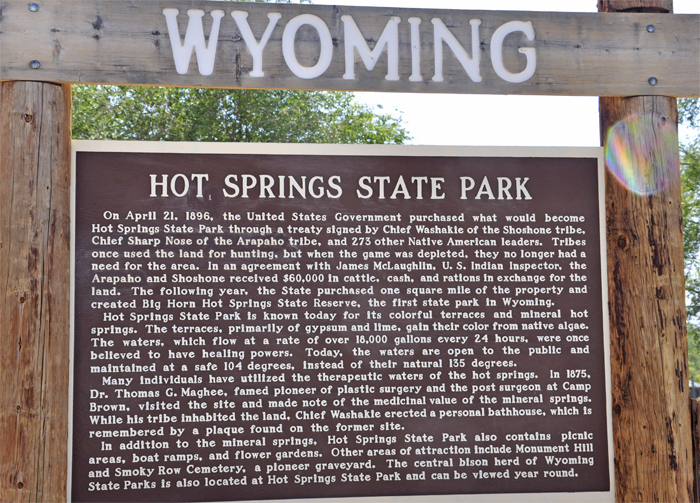 |
|
|
|
Below: Lee Duquette on the 1916 Swinging
Bridge - This suspension foot bridge across the Bighorn River is commonly
called "The Swinging Bridge." The bridge offers a unique vantage
point from which to view the Bighorn River and mineral terrace. |
|
Below: A view from each side of the boardwalk
that leads to the suspension bridge. The water runs through several
ponds and towards the river, where run-off from other smaller springs
combines to form Rainbow Terrace, a smooth, patterned
travertine formation extending for 1,000 feet. Paths circle the edges
and a boardwalk crosses the center, allowing for close-up views, but
the best perspective is from the far side of the river, which may be
crossed on Swinging Bridge - a historic iron suspension
bridge that does indeed wobble when in use. |
|
|
|
|
|
|
Below: View of Big Horn River from the suspension bridge
plus the view of the river after crossing the bridge |
|
|
Below: Karen Duquette beside the suspension
bridge and Rainbow Terrace, a smooth, patterned travertine
formation extending for 1,000 feet. |
|
|
Below: Big Born River and
the edge of Rainbow Terrace - Discharging over 3 million gallons of
135 degrees F water each day. The mineralized hot springs at Thermopolis
are the largest in the world, and form the main feature in the oldest
state park in Wyoming, created in 1897. The springs have created a beautiful
terrace of white, yellow and brown travertine, on the banks of the Big
Horn River. |
|
|
Below: The beautiful, amazing travertine
formation at Rainbow Terrace in Hot Springs State Park |
|
|
|
|
|
|
|
Below: A view of the above area from
an overlook |
|
Below: Sign about the Tepee Fountain built
in 1909 to vent steam from hot mineral water that was piped throughout
the park. As water flows over the structure, it cools and deposits layer
upon layer of travertine. This process is similar to the formation of
terraces seen throughout the park. |
|
Below: The earliest
photo of the Tepee Fountain shows water flowing out of a vertical vent
pipe over a pyramid of rocks. |
|
Below: Other historical photos
show the buildup of mineral deposits over time - 1920, 1930, and 1950 |
|
Below: Karen Duquette at the Teepee Fountain
at Thermopolis Hot Springs, a giant, multicolored dome that seems to
swell up from nothing. Underneath this large outcropping of mineral
deposits is a 25-foot steel pipe that replaced the original 12-foot
high wooden vent, first put there nearly 115 years ago to vent the area’s
famous mineral hot springs. When the mineral deposits started building
up around it, a pyramid-shaped structure was built around the pipe,
which over the decades has built up to form the growing dome people
see today, so it is not a natural formation. It continues to grow as
the minerals build up around it. |
|
|
|
Below: A pile of very old cars in the nearby
junk yard area - how strange that this is in a state park! |
|
|
